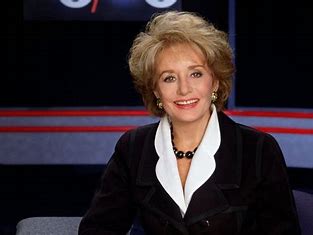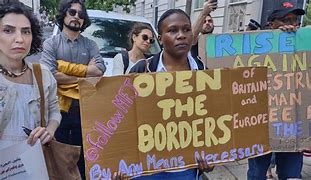
Each December, for more than two decades, Barbara Walters hosted Barbara Walters’ Ten Most Fascinating People of the Year, a breezy album of interviews with newsmakers as defined, of course, by Barbara Walters.
Take 1999, for example. Who else but Walters would think King Abdullah II of Jordan, Joe Torre of the Yankees, soap-opera empress Susan Lucci and a circus ringmaster named Jonhathan Lee Iverson belonged together?
Jesse Ventura, another honoree that year, must have represented the ideal guest in Barbara’s Ultimate Green Room: pro-wrestler-turned-governor.
If TV adhered to truth-in-packaging rules, the show would have been called Barbara Walters and the Ten Other Most Fascinating People of the Year. By the time Barbara Walters died today, at the age of 93, no TV journalist had so consistently and over such a long period of time been part of the story.
From her beginning as the Today Girl on NBC’s Today in 1962, Walters credited her longevity partly to working in an era when TV network news dominated, allowing her in 1977, for example, to nudge Middle East diplomacy forward and score a joint interview with Menachem Begin and Anwar Sadat in Jerusalem.
As Walters wrote in her memoir, Audition, “In this time of instant Internet news, cell phones that take videos, and a profusion of blogs where everyone is a reporter, there will be little chance for any single person to have had the kind of career that I’ve had.”
Note that Walters did not write “no chance,” since she undoubtedly – and justifiably – believed that even today a young version of herself could still prevail against the forces of Twitter and Snapchat.
As long as, of course, that person was raised by a depressive, debt-prone nightclub owner like Lou Walters, who for 20 years ran The Latin Quarter in New York and taught his daughter to be comfortable around celebrities, and by a doting mother who also took care of Barbara’s autistic sister and by example showed her the power of empathy.
Knowing how to be solicitous around famous people explained a large part of Walters’ success, but what toughened her was competing in network news, “a boys’ club that didn’t welcome newcomers.” No matter what the slight – being told by a young Don Hewitt, who later created 60 Minutes, that she didn’t have “the right looks” for TV, earning much less than her co-hosts during her 15-year Today show stint, being condescended to by Harry Reasoner on-air when she left Today to serve as his co-host on ABC’s Evening News – Walters persevered.
She did not invent the celebrity TV interview, but her ability to snag guests (a skill learned in her early days as a booker at Today) and grill them in a way that warmed rather than singed saved her career after the Reasoner debacle. Movie stars, presidents, convicted killers, dictators – they all subjected themselves to Walters’ style of empathetic nosiness.
She could be easily parodied, as Gilda Radner did so memorably as Baba Wawa on Saturday Night Live, an impersonation that deeply upset her. Decades later, Walters was still setting the record straight in Audition: “By the way, I never had trouble with my l’s, only my r’s, but it made it funnier.” So true.
Walters could be unfairly mocked; her infamous question to Katharine Hepburn about what kind of tree she would prefer to be followed Hepburn’s statement that she had become “like a tree.” (Answer: a white oak.) And Walters herself regretted her admonition to President-elect Jimmy Carter in 1976 to “Be wise with us, Governor. Be good to us.”
But an equally derided moment in that same interview – asking Carter and his wife if they slept in a double bed or twin beds – now seems as tame as inquiring if they take their coffee black or with milk.
Walters often found herself in competition with ABC colleague Diane Sawyer for guests, but she won more often than she lost, mostly by playing every card she could. In the process of wooing Monica Lewinsky, Walters invited Lewinsky’s lawyer William Ginsburg as her guest to Time’s 75th anniversary dinner in 1998, which featured President Bill Clinton, and dozens of other cover subjects.
As she recounts in Audition, she had “a lousy time” because her table was in the back. Years later, when I explained to her Ginsburg was one of several guests the Secret Service had said must not sit anywhere near Clinton (the others: Jack Kevorkian, Louis Farrakhan and Hitler Propagandist Leni Riefenstahl), Walters just shrugged and said her real problem was that she had sat next to William Westmoreland, who “babbled and drooled.”
She did land the Lewinsky interview, one of Walters’ most skilled ever, watched by nearly 80 million viewers.
In his 1978 profile of Johnny Carson for The New Yorker, the critic Kenneth Tynan shared a friend’s observation that if everyone Carson met off-set had red camera lights on their foreheads, the famously shy TV host would be the greatest conversationalist ever.
Walters’ great talent was that she did act as if everyone had those lights, whether that person sat next to her at a dinner party, drove her in cab or approached her for an autograph in a hotel lobby. Everyone has a story to tell, Barbara Walters believed, and who better to tell it to than her?
- An Vanity Fair report / By Jim Kelly











